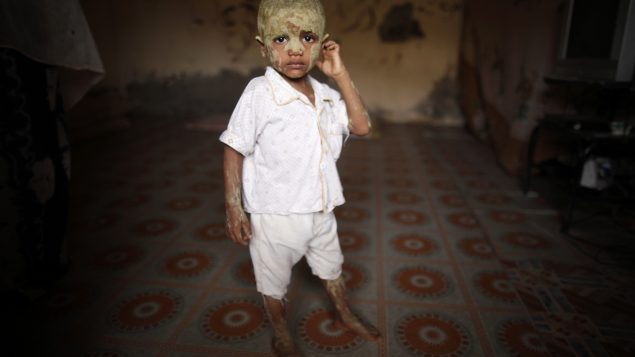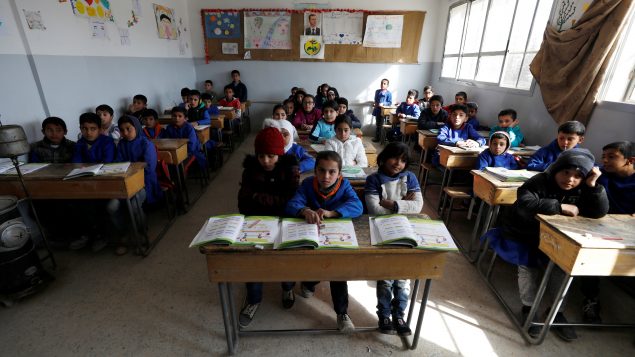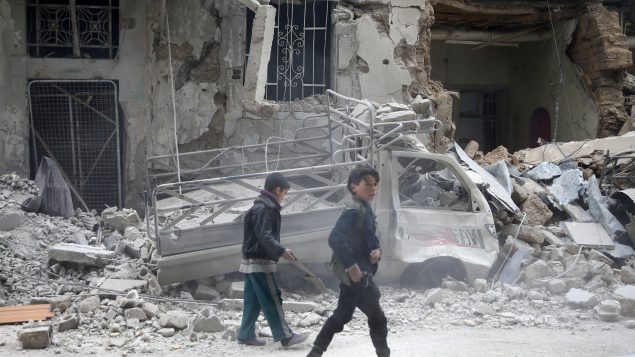One in every six children, or nearly 357 million, are now living in areas affected by conflict, according to a new report released by Save the Children ahead of a global security conference in southern Germany.
That’s a 75-per-cent increase since the early 1990s when it was around 200 million, according to the report entitled The War on Children: Time to End Violations Against Children in Armed Conflict.
“That’s a huge increase,” said Bill Chambers, president and CEO of Save the Children Canada. “For the most part the plight of children in the world has improved over the last 20 years but the number of conflicts that are actually engulfing children has increased significantly.”
(click to listen to the interview with Bill Chambers)
ListenNearly half of these children, 165 million, live in areas affected by high-intensity conflict where they could be vulnerable to the UN’s six grave violations against children in conflict, including killing and maiming, recruitment and use of children, sexual violence, abduction, attacks on schools and hospitals, and denial of humanitarian assistance, the report says.
Since 2010, there has been a 300-per-cent increase in the number of children who have been killed or maimed in conflict, Chambers said in a phone interview from Ottawa.

Three-year-old Muhammad Nasser has his face covered with a traditional medicine to heal skin rush in his family’s shelter at a school in the southern Yemeni port city of Aden June 16, 2012. . (Khaled Abdullah /REUTERS)
In the meantime, incidents of denial of humanitarian access have skyrocketed by more than 1,500 per cent, says the report prepared by Save the Children and the Peace Research Institute Oslo (PRIO).
“Part of that is not targeted at children, part of it is just the urbanization of war, more and more wars happen in highly populated areas and so the military forces carry out their military campaigns without regard to civilian deaths,” Chambers said.
“But there are also instances where children are actually targeted, where children are used as shields, where schools and hospitals are targeted in warfare and that also is very disturbing.”
The widespread stigma around rape and sexual assault means these crimes against children are especially under-reported, but the problem of sexual exploitation of children in conflict zones remains prevalent and both girls and boys are at risk, says the report.
The report ranks Syria, Afghanistan, Somalia and Yemen as the most dangerous places for children.

Girls walk past the site of an explosion in Sanaa February 3, 2014. (Khaled Abdullah/REUTERS)
In general, children in the Middle East were most likely to live in a conflict zone, where two in every five lived within 50km of a conflict zone. Africa was ranked second, with one in five children living in conflict zones.
“There exist in the world international laws that are supposed to protect children from being targeted in wars,” Chambers said.
But the international community needs to do a better job of prosecuting alleged perpetrators of crimes against children, he said.
Save the Children is urging the Canadian government to step into a leadership role in mobilizing the international community to put an end to these horrific violations against children, Chambers said.
“There are four areas that we think improvement is needed,” Chambers said. “First is in preventing children from being put at risk – obviously the first part is to have fewer conflicts – but beyond that an investment in peacekeeping, conflict prevention initiatives and training of military forces at how to keep children safe in conflict.”
Another piece of the puzzle is upholding international laws and standards, he said.

Students sit in a classroom at a school in Sahnaya, near Damascus Syria February 4, 2018. Picture taken February 4, 2018. (Omar Sanadiki/REUTERS)
“Finally we need funding and programming that ensures that we rebuild the shattered lives of children who have been affected,” Chambers said.
The report has been launched ahead of the influential Munich Security Conference which begins on Friday. Hundreds of global political, military and security leaders will attend the three-day conference. presenting a perfect opportunity to discuss potential solutions to protect children in conflict, Chambers said.
According to conference organizers, among this year’s confirmed participants are UN Secretary-General António Guterres, EU Commission President Jean-Claude Juncker and NATO Secretary-General Jens Stoltenberg.
Canada will be represented at the Conference by Foreign Affairs Ministet Chrystia Freeland and Defence Minister Harjit Sajjan.







For reasons beyond our control, and for an undetermined period of time, our comment section is now closed. However, our social networks remain open to your contributions.